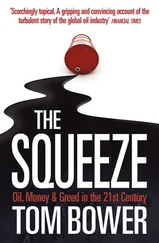CHAPTER 3 The Killer as Victim: James Hackman
IN THE SPRING OF 1779 Dr Johnson and his close friend Hester Thrale, whose own intimacy has long been a source of speculation, discussed relations between the sexes. Mrs Thrale was all for woman-power: ‘It seems to me that no Man can live his Life thro’, without being at some period of it under the Dominion of some Woman – Wife Mistress or Friend 125 .’ Nevertheless she found it hard to fathom Hackman’s passion for Ray. It was, she said, ‘the strangest thing that has appeared these hundred years’. Boswell had told her that his last words on the scaffold were ‘ Dear Dear Miss Ray’. ‘ Here was Passion for a Woman neither young nor handsome; whose eldest son was eighteen [sic] years old & a sea officer when she was shot by her Lover, & a woman not eminent as I can find for Allurements in the Eyes of any Man breathing but himself, & Lord Sandwich, who ’tis said had long been weary of her, though he knew not how to get free.’ But Dr Johnson took a very different view. ‘A woman’, he said, ‘has such power between the Ages of twenty five and forty five, that She may tye a Man to a post and whip him if she will.’
While Mrs Thrale pondered the powers of middle-aged women and Johnson surrendered to his masochistic fantasy, all over London people of fashion gossiped about the murder and its motive. In the twelve days between the killing of Martha Ray and the execution of James Hackman, the crime was on everyone’s lips. Sandwich’s colleagues from the Admiralty chatted at court with Lord Hertford about the tragedy. Ladies and gentlemen exchanged notes and items of news. ‘For the last week’, Horace Walpole wrote to his friend in Florence, Sir Horace Mann, ‘all our conversation has been engrossed by a shocking murder 126 .’ Lady Ossory concurred, writing to George Selwyn, ‘I found Miss Ray, or at least her unfortunate admirer, occupied everybody 127 .’ But if Johnson and Thrale’s discussion was one of many that took place in the few weeks after Martha Ray’s murder, it had a rather unusual feature: it was about Martha Ray, and not about her murderer. Lady Ossory’s mid-sentence switch from the victim to her ‘unfortunate admirer’ perfectly captured the public’s changing preoccupations. Ray was dead, Sandwich had retired from the public eye first to a villa at Hampton and, ‘when every thing there brought her to his remembrance’, to a house in Blackheath. This left Hackman as the focus of public attention: the extensive newspaper reports of his interrogation by Sir John Fielding, his trial at the Old Bailey, and his execution on 19 April less than two weeks after the killing made him, as one news report put it, ‘the topic of conversation 128 ’.
Naturally enough, much of this gossip took the form of speculation about Hackman’s motives for the crime. Many, like Mrs Thrale, were puzzled about the strange affair. As Horace Walpole commented to a friend, ‘Now, upon the whole … is not the story full as strange as ever it was? Miss Wray [sic] has six children, the eldest son is fifteen, and she was at least three times as much. To bear a hopeless passion for five years, and then murder one’s mistress – I don’t understand it 129 .’
This curiosity about the love of a young man for an older kept woman manifested itself in a preoccupation with Hackman’s conduct after the murder. It was as if the means of understanding him and his bloody crime lay not in a forensic investigation (which, as we have seen, Sandwich tried to stifle), but in evidence offered in the person of Hackman himself. The key to the crime lay in Hackman’s character. What he said was less important – though this mattered – than his entire bodily comportment. True feeling, in any sentimental story, was often beyond words. It could be seen in involuntary (and therefore authentic) physical expression: shudders, blushes and blanching, and, above all, spontaneous tears. Such bodily signs were clues to character and evidence of refinement and sensibility. As Samuel Richardson put it, ‘the man is to be honour’d who can weep for the distresses of others 130 ’. Tears told observers about the person who wept but they also excited powerful sympathetic feelings in the viewer. Indeed, the response that a character’s palpitations and weeping provoked was itself an indication of what the responder was like. Thus after the murder both press coverage and private correspondence were preoccupied with Hackman’s public conduct, and with the powerful feelings aroused among those who witnessed his trial and execution.
All the newspapers reported that when Hackman was questioned by Sir John Fielding the day after Ray’s shooting, he found it hard to answer the questions. ‘From the agonizing pangs which entirely discomposed, and externally convulsed him,’ reported the London Chronicle , ‘it was sometime before the magistrate could proceed 131 .’ Onlookers were moved by his distraught behaviour, the papers noted: ‘His manifest 132 agitation, contrition, and poignant grief, too sensibly affected all present, to wish to add to such heart-felt misery by judicial interrogations during such keen distress of mind.’ An unexpected delay in proceedings made him worse, and it took him a while to recover his composure and display ‘the utmost steadiness’. During Fielding’s questioning Hackman ‘wept very much and was entirely convulsed each time the name of the deceased was mentioned. He did not palliate his offence, and said he eagerly wished to die.’ The London Evening Post recorded that when Fielding presented him with evidence of the shooting, ‘he sank into a grief which is impossible for the power of words to paint 133 ’. But by the end of the proceedings, he had become ‘quite composed, and at present appears perfectly resigned to meet his approaching fate with a becoming fortitude 134 ’. ‘His sighs and tears’, the paper concluded, ‘added to his genteel appearance, made most people give way to the finest feelings of human nature 135 .’
The General Advertiser of 13 April drew a general moral lesson from this piece of sentimental theatre: ‘The very humane behaviour of Sir John Fielding on a late melancholy occasion, and the tender constructions of a pitying audience on the conduct of the unhappy subject, does infinite honour to the laws of our country, and displays the humanity of our nature in the most beautiful and lively colours.’ People may have been shocked by the crime, ‘but who will say that the author of the shocking tragedy of Wednesday last is not amply punished? Who can picture to himself the misery that must penetrate and fill the deepest recesses of his mind, who has suffered himself to commit the horrid crime of murder, through the dire excess of a passion the most admirable that can fill the heart, while within the pale of reason? 136 ’ As another press item concluded, ‘the tear of 137 compassion should not be withheld from him in the moment that Justice demands an exemplary expiation of the deed ’.
A similarly powerful sympathetic response dominates the press accounts of Hackman’s trial, which contrast strongly with the formal record of the court proceedings which was remarkably prosaic. Most of the proceedings were taken up with establishing the facts of the case, calling successive witnesses to satisfy the law by confirming what everyone already knew. Hackman’s counsel did not dispute the facts, and asked witnesses very few questions. What would have been of most interest to modern legal scholars – Davenport’s speech at the end of the trial arguing that Hackman was innocent on the grounds of temporary insanity, or ‘irresistible impulse’ – was not even recorded by the shorthand writer. Given that one of the perquisites of the recorder’s job included the profits from the publication and sale of the trial’s transcript, it would seem that there was very little interest in the legal deliberations of the trial.
Читать дальше












